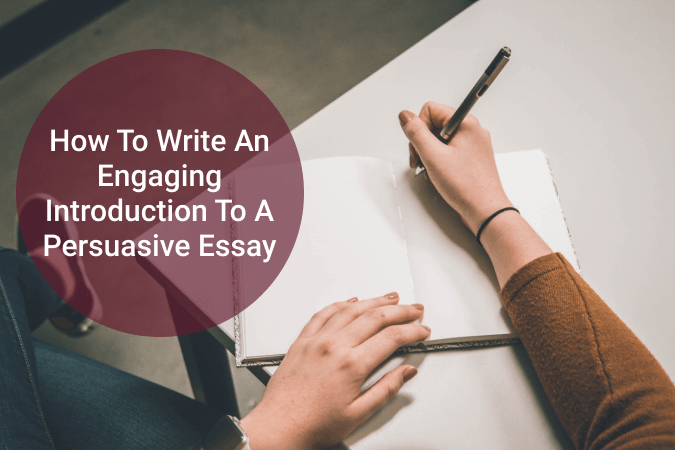
An essay outline is an important element of every essay paper. It allows you to bring together the entire paper’s elements properly and assuring a requested essay format. An essay outline can be used as a writing plan. It allows you to deal with every part of an essay accurately. Moreover, an essay outline makes it easier to come up with every separate argument, its supporting evidence, important facts, concepts, and explanations.
You can use various quotes, anecdotes, interesting facts, or controversial sayings in order to start your essay effectively. Use any available persuasive tools to support your point of view. Do not hesitate to write down your unparalleled ideas even if they look too provocative. Follow the writing requirements when completing an essay. Be very attentive to details and make sure to check an essay a few times before submitting it.
When you need to write a perfect persuasive essay, be very attentive to the structure of your paper. You need to focus on the main argument of an essay. Focus on the main statement and reveal it throughout an entire paper. Be ready to pay attention to the central argument of your persuasive essay. Use various writing techniques to reveal it profoundly. Avoid using superfluous information and insignificant details. Use a rich language to support your arguments. Be ready to reveal different ideas and convincing phrases. Make sure to support every provided argument with an up-to-date and relevant confirmation.
There is no need to write down all the arguments and supporting evidence into this part. You will write them down into the main body part. State a brief and informative thesis statement. Always check your paper before submitting it to your tutor or college professor.
Additional Elements of a Persuasive Essay
An essay typically contains from 3 to 5 supporting paragraphs. You need to note down the main arguments and evidence into supporting paragraphs. Write every new argument in a separate paragraph. You should state arguments, important facts, evidence, and additional information in the body part. This is the biggest part of an essay. It contains all the calculations, results of analyses, findings, concepts’ revelation, and full argumentation.
A persuasive essay has a standard essay structure. Often, writers prefer a 5-paragraph essay format the most. In general, an essay requires a strong and attention-grabbing introduction, informative main body parts, and a short and snappy conclusion.
A conclusion is the closing part of an article. You should make it short and concise. There is no need to bring new arguments and relevant evidence in this part of your research paper. Summarize your arguments and findings in order to provide a final message. Avoid reminding the same information from the body part. You should bring all central points to a logical ending in conclusions.
When you need to perform a perfect persuasive essay, be ready to pay a lot of your time and effort. It can be difficult to write an essay at first. Moreover, you need to pay your attention to every aspect of your paper. In fact, you need to share your point of view where making strong points, use strong words, and convincing conclusions. An attention-grabbing introduction is necessary. It assures the fact that your readers will read the entire essay eventually.

Know your audience. Determine if your audience will agree with your position and why they may not. You must be able to understand both sides of the issue in order to successfully argue your point of view.
Thoroughly research your topic. The point of a persuasive essay is to provide detailed and compelling evidence—you should be able to disprove the opposing argument. It will likely be necessary to undertake library-based research in order to accomplish this.
The body. The body should consist of all the arguments that support your thesis. Each paragraph should focus on one particular point. Next, include one or two paragraphs to succinctly explain and refute the most compelling opposing argument.
Support your argument. Use hard facts. You can gather these from your research, observations, or personal experiences. But be careful! In order to avoid plagiarism, you must cite your sources. You should always use verifiable statistics. It is important to be able to back up your argument with data. In order to further strengthen the argument in your persuasive essay, try using one or two direct quotes from experts on the topic. Finally, provide meaningful examples to enhance and clearly illustrate your argument.
Helpful tips for writing a successful persuasive essay
Think about the structure of your essay. Determine what evidence you will include and the order in which you will present it. Remember, it must be logical.
The introduction.The introduction in your persuasive essay should grab the readers' attention and provide background information about your subject. It should end with a clear statement of your thesis.
Take a stance. What do you think about the issue? What side will you take? Be aware of any prejudices you might have that could color your argument. What resolution will you suggest?

The first step in learning how to write a persuasive essay requires you to understand how to draw an outline of the piece you are about to pen. Therefore, in this section, you will learn the process of preparing a structure of a persuasive essay, regardless of the topic you are planning to write on.
Depending on the topic, the вЂ˜Body’ of a persuasive essay may comprise multiple paragraphs, where each of those passages should focus on one point of the subject. In addition, every part should also contain at least one supporting link or reference to compliment the point.
The next step is to prepare an outline for the essay. You can follow the method explained in Part 2 to learn how to create them. The outlines help you draft the content in a proper and correct sequence, thus making the thesis more persuasive.
Depending on the subject you are planning to write a persuasive essay on, make sure to understand what kind of audience you are about to address. This would help you come up with a better, more engaging content for the essay.
How to Organize Your Persuasive Essay

The concluding paragraph should be kind of a recap about everything you discussed in the вЂ˜Introduction’ and the вЂ˜Body’ sections of the essay. This passage should also contain a few links or references to support the author’s viewpoint.
Since you are required to convince the readers for or against the subject in question, it is imperative to pick your side. Ensure to follow your instinct as to what your opinions about the topic are, and choose accordingly.
This is another section in the вЂ˜Body’ of the essay that discusses the вЂ˜against’ aspect of the topic in question. This paragraph should mention key points to refute the subject, and to persuade the readers to believe in the rightness of the author’s point of view.

We will write a custom essay specifically for you for only $16.05 $11/page
A persuasive essay is a type of writing that uses facts and logic to argument and substantiate such or another point of view. The purpose is to assure the reader that the author’s position is viable. In this article by Custom-writing experts, you can find a guide on persuasive writing, compelling examples, and outline structure. Continue reading and learn how to write a persuasive essay!
These nine steps are the closest thing you will find to a shortcut for writing to persuade. With practice, you may get through these steps quickly—or even figure out new techniques in persuasive writing.
An argumentative essay intends to attack the opposing point of view, discussing its drawbacks and inconsistencies. A persuasive essay describes only the writer’s opinion, explaining why it is a believable one. In other words, you are not an opponent
⚖️ Argumentative vs. Persuasive Essay
Have you ever tried to get somebody round to your way of thinking? Then you should know how daunting the task is. Still, if your persuasion is successful, the result is emotionally rewarding.
A persuasive essay primarily resorts to emotions and personal ideas on a deeper level of meaning, while an argumentative one invokes logic reasoning. Despite the superficial similarity of these two genres, argumentative speech presupposes intense research of the subject, while persuasive speech requires a good knowledge of the audience.
Below you’ll find an example of a persuasive essay outline. Remember: papers in this genre are more flexible than argumentative essays are. You don’t need to build a perfectly logical structure here. Your goal is to persuade your reader.
:max_bytes(150000):strip_icc()/GettyImages-180587558-1332a5b86e5b4ca691e49390bd447f4c.jpg)
Narrative writing is often, but not always, in the first person and is organized sequentially, with a beginning, middle, and end.
Persuasive writing is a more sophisticated type of writing your child will be introduced to around fourth grade. Strong persuasive writing is like a debate played out in written words.
Use of adjectives and adverbs for descriptive writing begins between ages 7 and 9. At that time, they will also begin grouping sentences together into paragraphs. Children learn how to use different types of writing between ages 9 and 11. By middle school, they are writing reports and multi-paragraph essays.
Narrative writing tells a story. Though it’s most commonly used in personal essays ("What I Did to Celebrate the Holidays"), this type of writing can also be used for fictional stories, plays, or even a plot summary of a story your child has read or intends to write. This is likely the most frequently used of the four most common types of writing, and students will spend a significant amount of time learning how to write narratives.
4 Types of Writing Kids Learn About
Descriptive writing is used in depictions of fictional and non-fictional characters, poetry, parts of book reports, and in various kinds of observational writing.
Descriptive writing is used to create a vivid picture of an idea, place, or person. It is much like painting with words. It focuses on one subject and uses specific detail to picture it.
Expository writing is to-the-point and factual. This category of writing includes definitions, instructions, directions, and other basic comparisons and clarifications. Expository writing is devoid of descriptive detail and opinion.
